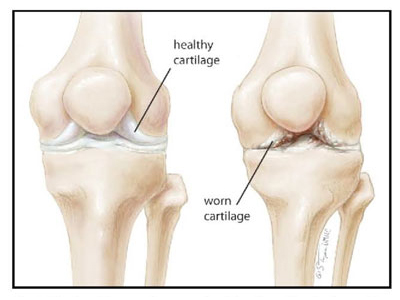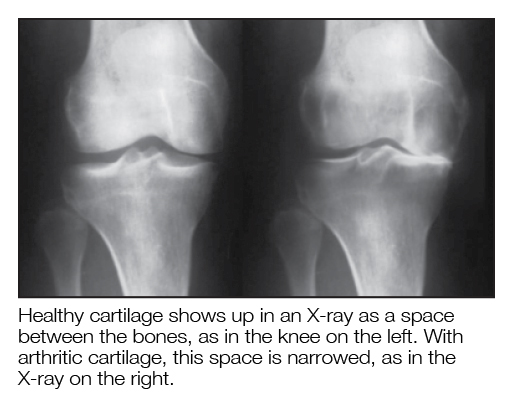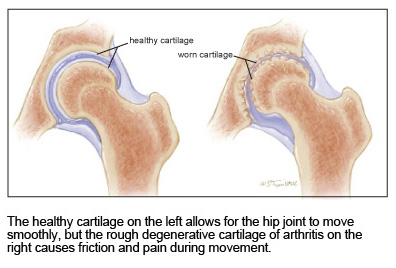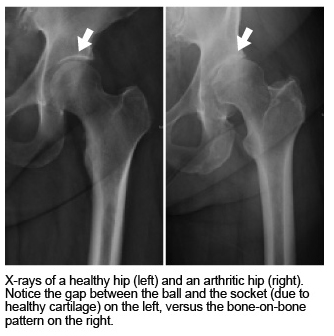What is a degenerative knee joint?

As cartilage gets rough, the friction in the joint increases. The result is an inflamed knee joint that swells and hurts. Arthritis and injury are usually responsible for degenerative changes in the knee. Pain, leg deformity, and disability can get severe enough so that patients seek help.
Why does cartilage get damaged?
Cartilage can be damaged by injuries, overuse, inflammatory conditions (like gout, rheumatoid arthritis, and others), and genetic causes. Obesity, poor joint alignment, age, and repetitive trauma to a joint can also damage cartilage. Diseased cartilage loses its smooth, friction-reducing surface, leading to progressive roughening of this biological bearing.
What causes the painful and annoying symptoms of arthritis?
When bone touches bone in the knee joint after loss of cartilage, the result is pain, grinding, swelling, and stiffness. The pain comes from inflammation in the tissues lining the knee joint; inflammation comes from abnormal movement and friction. This is why anti-inflammatory medicines such as aspirin and ibuprofen can often help arthritic pain, at least early in the disease. Swelling and fluid on the knee are adaptive mechanisms by which the body tries to deal with an inflamed and arthritic knee joint.
Is the wear of knee cartilage inevitable with old age?
Not particularly. Even though everything wears with time, the knee joint wears differently from person to person. Most people will never need knee surgery regardless of age. Others are at increased risk of developing arthritis.
While family history, racial origin, and genes may play a role in this, there are things you can do to manage an arthritic knee. Establishing a routine of light aerobic exercise, maintaining ideal body weight, and avoiding extreme sports that injure the knee are some steps that will help reduce the risk of wear in the knee.

 Muscles, tendons, and ligaments hold the ball in the socket, preventing it from slipping or dislocating. Hip dislocation, usually associated with severe physical trauma, is a serious condition requiring immediate medical treatment.
Muscles, tendons, and ligaments hold the ball in the socket, preventing it from slipping or dislocating. Hip dislocation, usually associated with severe physical trauma, is a serious condition requiring immediate medical treatment.